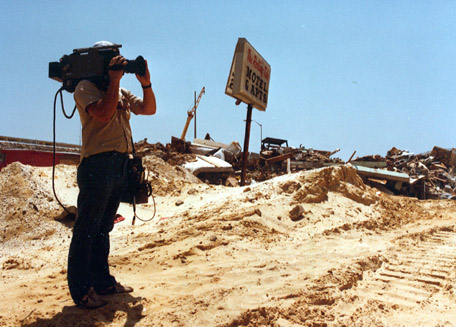The Dawn of
Satellite News Coverage
at WTVT

by Jim West,
WTVT News Director, 1984-1989
Reaching
For the Sky:
The
Dawn of
Satellite News Coverage
at WTVT

by
Jim West,
WTVT News Director, 1984-1989
 Telstar 1 |
The commercial satellite industry blasted off in 1962 with the launch of AT&T's Telstar 1, which was capable of relaying television signals, telephone calls, and facsimile photographs. By the late 1970's, Telstar and its descendants had plenty of company in Earth's orbit. Besides weather and military tracking satellites, a plethora of communication satellites were in place and becoming more important to television broadcasting. |
The television networks had been using trans-Atlantic and trans-Pacific satellites
to transmit programming to and from other continents. A few cable networks such
as the Christian Broadcasting Network (CBN) and Home Box Office (HBO) had
discovered the cost savings of programming sent via satellite to affiliated
stations and cable head-ends. For the most part, local TV stations, including
WTVT, were still receiving their network feeds through a microwave transmission
system maintained by Ma Bell. This meant the network signal had to be repeated
from tower to tower every 40 or so miles from
 |
Local stations that sent reporters to distant locations were occasionally
able to use network satellite facilities to send completed news packages back to
their station. This was the method
utilized for a week's worth of stories during WTVT's 1979 coverage of Hurricane
Frederick's damage in |
|
WTVT photographer Lynn Rabren on |